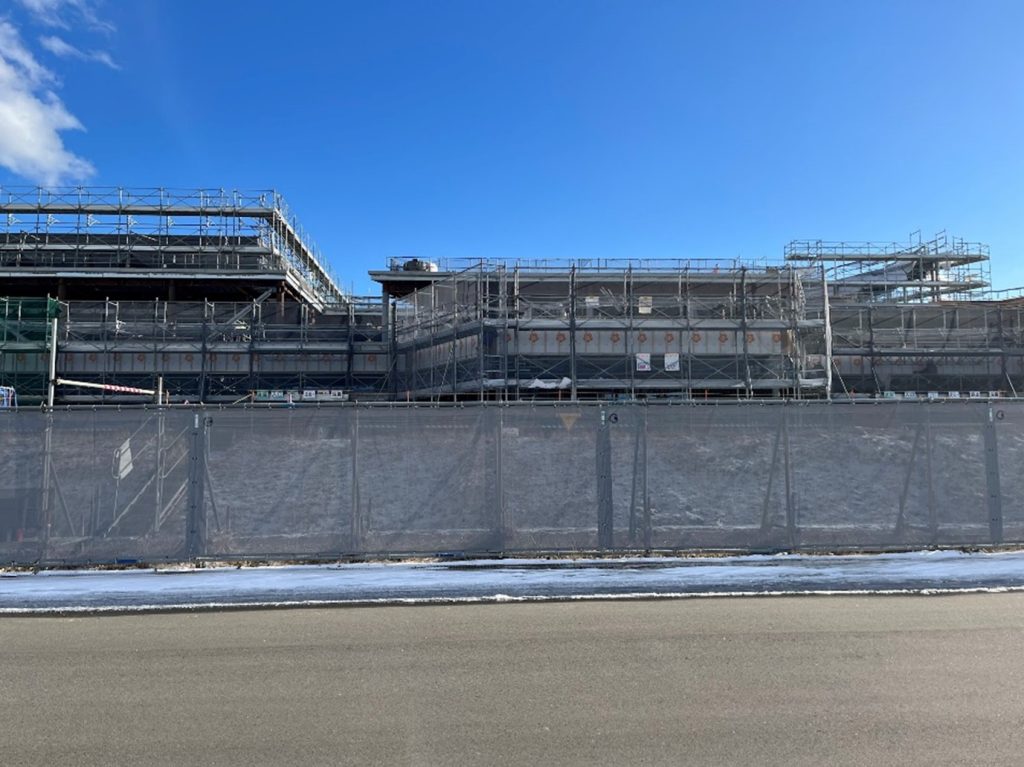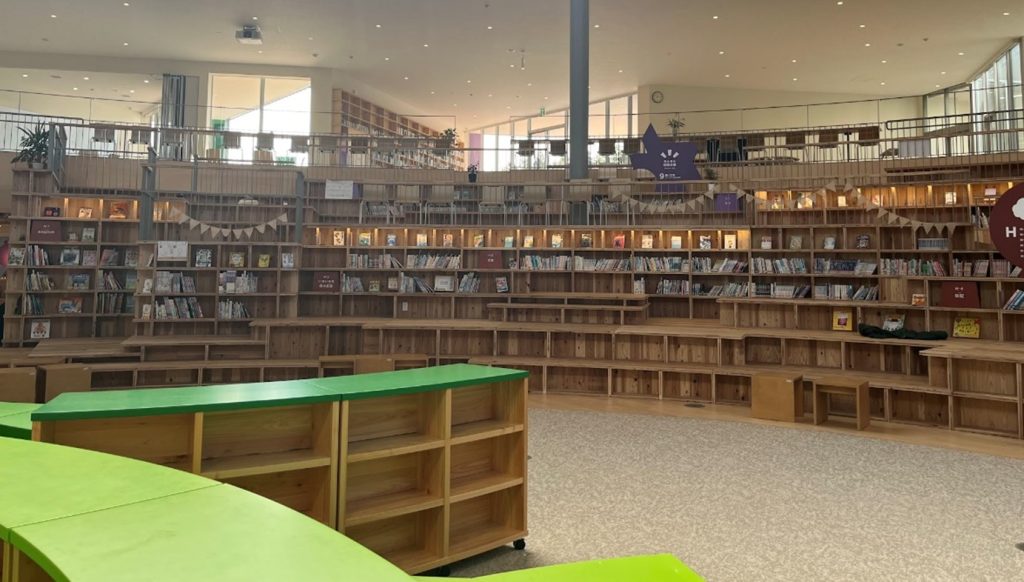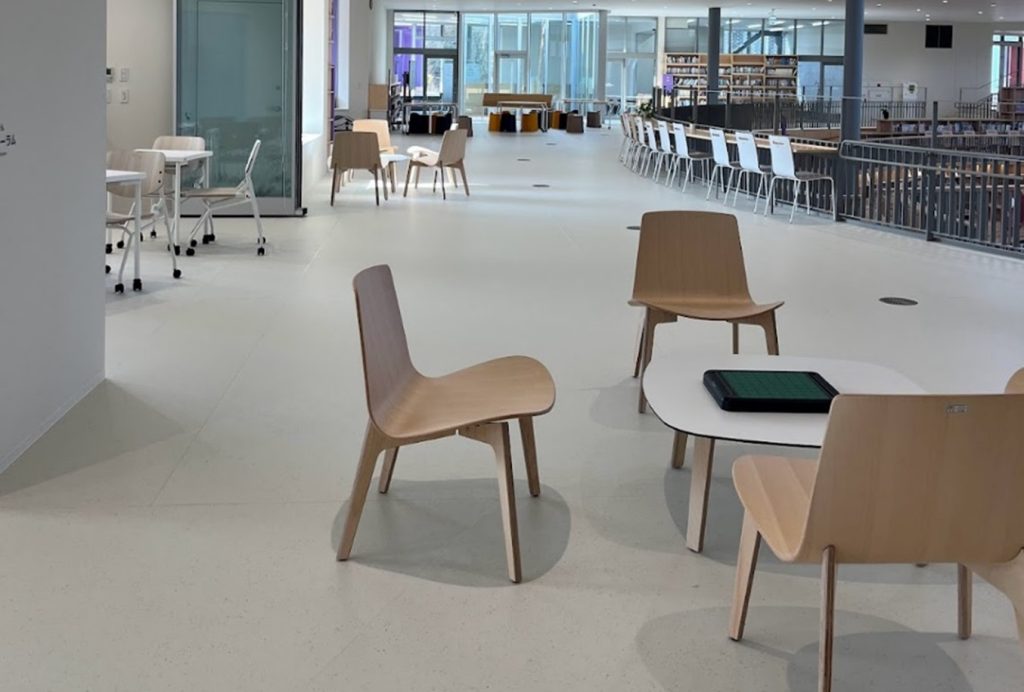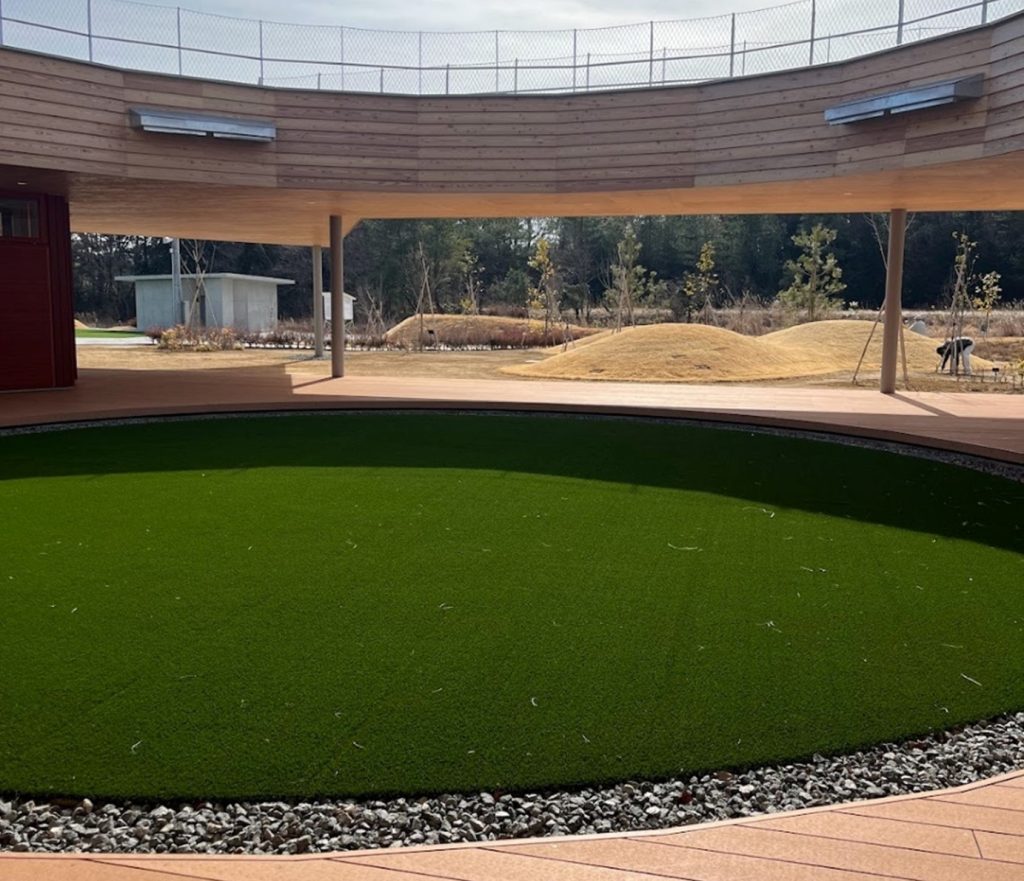by Lynn Ng
I have been skeptical of Japan’s education system for years after I taught at a rural high school for three years and saw the rigid barriers to holistic learning. When I saw the multi-million dollar construction project of Yume no Mori, a new public school for children aged 0 to 15 in the town of Okuma, hidden in the former Fukushima nuclear exclusion zone, in January 2023, I was skeptical. After all, what good is an expensive campus project if the education system is no different to that of other schools?

Copyright © Lynn Ng 2023
Yet, one year later, I stand deeply corrected. In 2024, I sat in on a class where two students were practicing English with their two teachers in a bright open classroom in Yume no Mori. “We want to extend, this is a rare chance to speak more English,” a student confidently tells the teacher at the end of the first session. Despite their looming high school entrance examinations, to which the second-half of the class was initially dedicated, these two students held no hesitation in expressing what they wanted for their education, which was to practice non-textbook, non-examination English. In fact, at Yume no Mori, there are no “teachers,” only “designers” that help students design the education that best suits their needs. The students thus become highly engaged in classes, for each activity is catered to their interests and abilities. The students are not bound to grade-levels or classrooms, but rather have open spaces all around the campus – including multiple nooks at the library and outdoor playgrounds – where they can decide to have their classes take place. Students wear no standardized attire, and neither do the “designers.”

Copyright © Lynn Ng 2024
Furthermore, the manager’s (Vice-Principal) passion and enthusiasm for this school and its students is clearly palpable. Dressed in a casual, smart jacket and T-shirt, he led us through the huge grounds with a large, open central library and several oddly shaped classrooms on two levels, while talking to each student as if they were his own children. He knows each student’s personality intimately, telling us stories of kids who used to skip school and now want to come to school every day, and he is proud of the students’ individual academic achievements.

Copyright © Lynn Ng 2024
By the end of the visit, I had come to the realization that the Yume no Mori model only works in a rural environment. A rural privilege, so to speak. In Japan’s rural environment, Yume no Mori offers its students not only plenty of space for leisure activities, but also for quiet corners for reading and studying or for a short nap. Students can easily share the same room in this large building without disturbing each other while studying. The low student-teacher ratio (29 students and 17 teachers) ensures that each student’s educational needs are optimally met and that students can build their academic and social confidence with their “learning designers.”

Copyright © Lynn Ng 2024
As I walked through the hallways of Yume no Mori that day, watching the children meaningfully engage in their learning environment and interact with their peers and designers, I felt an epiphany – the brief and intense understanding of that “hope” and future that my research participants often speak of. In Yume no Mori, I can so easily see in these children’s future potential: people who have mastered their art and are confidently putting their ideas out into the world. As I signed off the visitor list, I felt a deep stab of envy and sadness. I didn’t want to leave. A planned one-hour visit had turned into four, and yet I wanted to stay longer in the calming space of Yume no Mori. I can see the potential of Yume no Mori to encourage young people and attract young families to the region, thus repopulating the town. But more than that, I am rooting for the school, its leaders and designers and the next generation of talent that will emerge from this place.
